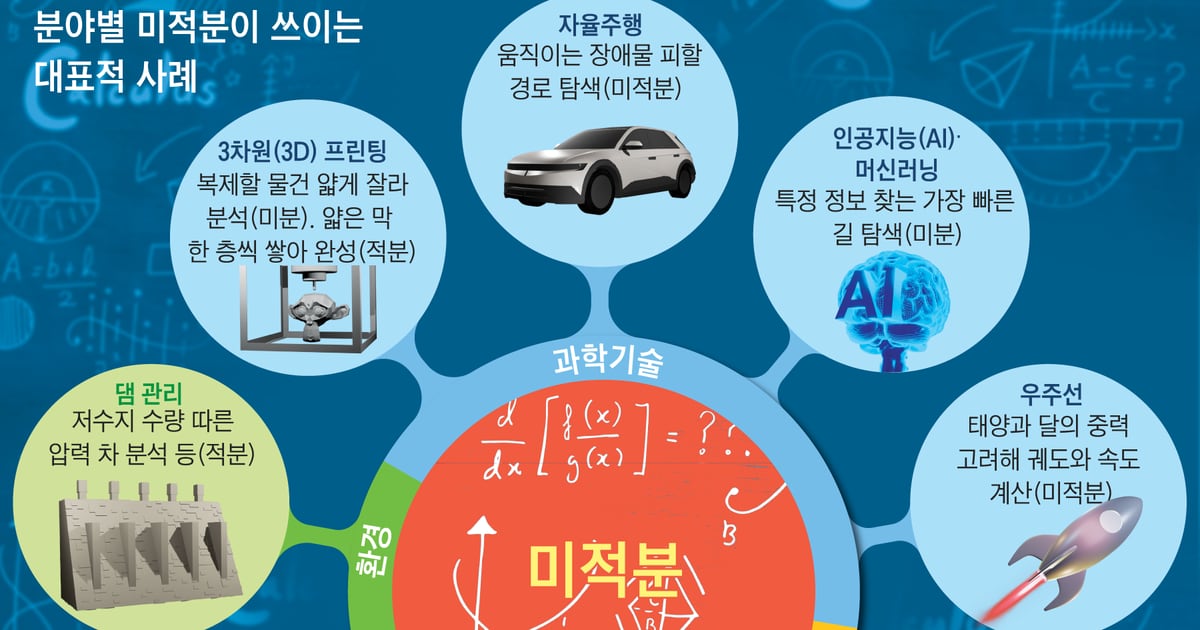Rep. Ha Tae-kyung of the People Power Party said about the exclusion of ‘Calculus II’, an advanced math subject, from the 2028 CSAT as an optional subject, saying, “This is a test plan that encourages a decline in math skills in the era of advanced science and technology.” Rep. Ha graduated from the Department of Physics at Seoul National University.
He said on Facebook on the 29th, “If the (CSAT) test becomes easier, you won’t study as much and your skills will inevitably decline.” The Korean Mathematical Society also said in a statement that day, “The CSAT reform plan is a clear plan to weaken mathematics education,” and added, “There are almost no developed countries that do not test Calculus II and Geometry for science and engineering majors.” The National Education Committee actually decided to ‘exclude Calculus II’, but the Citizen Participation Committee, which gathers public opinion at the National Education Commission, said that there were more opinions saying ‘include advanced mathematics’. This committee consists of 500 people, including parents and students. This is the first time in 34 years that science and calculus II have been omitted from the college entrance exam.
On the other hand, the civic group ‘A World Without Worries about Private Education’ said, “If advanced mathematics is included in the CSAT, the cost of private education, such as learning calculus from elementary school, may skyrocket.” Minister of Education Lee Joo-ho also commented on the controversy over the exclusion of calculus on the 28th, saying, “Our school’s CSAT math class has nothing to do with creative classes,” and “(excluding calculus) is rather a way to strengthen math.” What is calculus that causes such controversy?
Illustration = Kim Hyeon-guk
Calculus is essential for analyzing all movements. Humanity attempted to express all movements in the world through mathematics, but there were limitations until the concept of calculus was perfected. This means that the analysis remained at the level of analysis of stationary objects. Lee Gwang-yeon, a professor of mathematics at Hanseo University, said, “If mathematics before the development of calculus is called ‘still photography,’ mathematics after its development is called ‘moving pictures.’” A representative example of using calculus is car navigation. Because movement over time is analyzed, vehicle arrival time can be predicted. “Calculus can be applied to all fields that change over time,” said Kim Jae-kyung, a professor in the Department of Mathematical Sciences at KAIST. “We can calculate and predict things like stock prices that change in real time or how drugs work in our bodies.” /Reporter Yoo Ji-han, Jo Yu-mi, and Oh Joo-bi
Graphics = Yang Inseong
Differentiation is a method of cutting movements that change over time into infinite detail. Integration, on the other hand, is combining and stacking infinitely cut things. For example, if you differentiate the speed, you get acceleration, which is a change over time, and if you integrate the acceleration, you get speed. It is a concept like two sides of a coin.
◇Calculus, analyzes all moving objects
Calculus was developed in the 17th century by British physicist Isaac Newton and German scientist Gottfried Leibniz. The two scientists worked separately and came up with the concept of calculus around the same time. Professor Kim Jae-kyung of KAIST said, “Newton observed the speed at which planets move, and he devised calculus to predict how long it would take for them to return to their original positions.” Even before Newton, there were simple formulas for calculating distance, time, and speed, but they were limited to being applicable only when speed did not change.
With the theorem and development of calculus, modern science and engineering have grown rapidly. In World War II and elsewhere, calculus was used to accurately predict the trajectory of cannons. Thanks to calculus, the trajectory of the Apollo spacecraft that sent humans to the moon in the 1960s could be accurately calculated. Choi Soo-young, a professor of mathematics at Ajou University, said, “Calculations have become more precise as all macroscopic changes are expressed in equations.”
Nowadays, calculus is applied as a basis in all areas of engineering, including mechanical, electrical, and chemical engineering. It is said that it is difficult to follow science and engineering classes if you do not know calculus. In particular, most major subjects in engineering schools are directly related to calculus. Byeong-Tak Jang, a professor of computer engineering at Seoul National University, said, “In engineering subjects, mathematics such as calculus is like a language.” Cho Seong-bo, a professor in the Department of Electronic Engineering at Gachon University, also said, “The equations used in two of the three electromagnetism courses I teach are all differential equations.”
◇Essentially used in future cutting-edge technologies
It is no exaggeration to say that there is no field in our lives today where calculus is not applied. In particular, cutting-edge science and technology fields such as autonomous driving, artificial intelligence (AI), and machine learning cannot be developed without knowledge of calculus. For example, for an autonomous car to avoid collisions or collisions, it must use calculus to analyze external movements over time. The same applies to astronomical research, such as calculating the orbits and velocities of spacecraft and satellites, and planetary movements.
Calculus is also essential for semiconductors, Korea’s flagship industry. Calculus is used to check whether the design of a semiconductor, expressed as 0 and 1, is correct. Kim Jeong-ho, a professor in the Department of Electrical and Electronic Engineering at KAIST, said, “Because the operating principles of semiconductors are expressed in calculus, you cannot deal with semiconductor design without knowing this.”
Three-dimensional (3D) printing used in aerospace and medicine is also an example of using calculus. The basic concept of 3D printing is ‘a technology that builds objects layer by layer.’ Through differentiation, the object to be copied is cut into very thin pieces and analyzed, and then through integration, this thickness is stacked layer by layer from the bottom to the top to recreate the object. When an object made by 3D printing is enlarged under a microscope, the part that appears curved has the shape of a fine step. This means that it was cut extremely finely and then stacked again.
Calculus is widely used in economics, the environment, medicine, and art. In order to develop quarantine measures during the coronavirus pandemic, changes in the number of confirmed cases and the scale of critically ill patients must be predicted, and thanks to calculus, it was possible to calculate the ‘corona spread model’. Atmospheric changes due to climate change and greenhouse gas emissions, reservoir water volume, and pressure on dams are also estimated using calculus. Calculus is important not only when analyzing large objects, but also when analyzing very small air or water particles. It is thanks to calculus that scenes such as water pouring in movies can be created with computer graphics. Park Jong-il, president of the Korean Mathematical Society, said, “Calculus is necessary for analyzing all data and creating models in the 21st century.”
Graphics = Kim Ha-kyung
Hong Yoo-seok, dean of the College of Engineering at Seoul National University, said, “To prepare for the 4th Industrial Revolution and the AI era, fundamentals (basic physical strength) are the most important.” “It could become a ruin,” he said. On the other hand, an official in the education industry said, “In elementary school medical classes, the learning burden is increasing, with 6th graders learning calculus, and this is leading to an increase in private education costs. Even though calculus is important, isn’t excessive private education costs considered a cause of low birth rates?” did. The Ministry of Education said that even if ‘Calculus II’ is omitted from the CSAT, basic ‘Calculus’ will be included in the test and Calculus II can also be learned at school.
☞Differential and integral
The concept of infinite division is called ‘differentiation’, and the concept of infinite addition and accumulation is called ‘integration’. It is mainly used when analyzing the movement of objects. For this reason, mathematics before the development of calculus is sometimes compared to a ‘photo’, and mathematics after the development of calculus is compared to a ‘video’.
2023-12-29 18:27:00
#Calculus #controversy #difficult #solve


